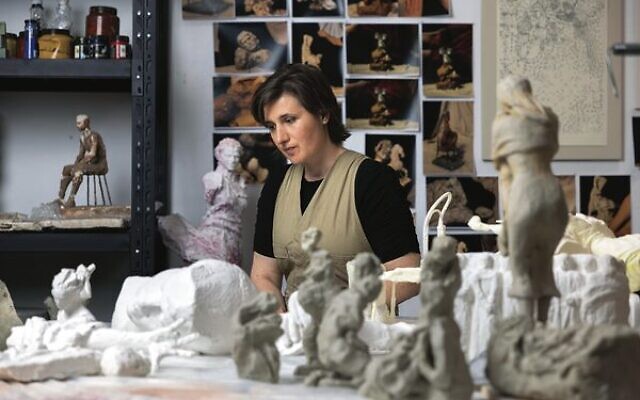Artist creates sculpture to make a point
"I did a lot of different things before I came to understand how sculpture is my thing," says Nina Sanadze.
Melbourne-based artist Nina Sanadze started her artistic career drawing. She was a graphic artist, concurrently a children’s book illustrator and a theatre designer and enjoyed portrait painting.
“I did a lot of different things before I came to understand how sculpture is my thing,” Sanadze said.
“Immediately the minute I touched clay, I had that sense of relief, that I knew what I was doing; it was an intuitive process.” She sometimes wishes she was a photographer or a filmmaker where her work would not entail large-scale sculptures. “It is difficult to justify having another kind of big object in a space, it is like giving birth, it is almost a responsibility sometimes thinking what to do with it.”
The soft clay Sanadze uses for her sculptures allows her to break down the finished work and create new pieces from the same clay. “I create them to make a point now, to say something now. And it’s more poignant when it’s so temporary. It is stronger through ephemerality. I can make big things lightly without worrying about having to sell them or their longevity and their footprint on the environment. I don’t make them for forever.”
Sanadze’s artistic practice is often to make replicas, documents, or documentaries and bring real artefacts into a gallery as a way of examining and thinking about history. She said watching the three-part Netflix documentary Einsatzgruppen: The Nazi Death Squads was devastating. The infamous Invanhorod Einsatzgruppen photograph of a woman holding a child while a Nazi soldier points a gun at her back was the opening title image. The photograph would not leave her and became the basis of her body of work Hana and Child, now on display at the Jewish Museum of Australia.
The documentary showed historical filming in the Ukraine where her grandmother and family lived. “I thought, ‘how can I talk about this?’ I usually do actual things, not general history, I create things that are quite personal. I had an intuition that this year I had to finally make work about the Holocaust. Until then I didn’t have the strength or confidence to feel I could touch the subject. After I had done all this other work, it was as if I was preparing for this. I felt that I could dare to touch this now.”
Her technique begins with working physically on the sculpture and then working on the words. “Yes, words,” she exclaims.
Sanadze researches and studies her subject deeply. “I talked with my mum and then I found the tapes that my grandfather left before he died. I listened to his account of the detailed history of his whole family. I guess one has to be ready at a certain age. It was the right time, and something told me I had to make this work that year [2023].
“This quite often happens in my work and the timing is everything. I wanted to show love and immense tenderness between each mother and child in their last moments, not the violence.”
Purchase Tickets for Hana and Child by Nina Sanadze at the Jewish Museum Australia until Sunday, June 9 at trybooking.com/1175623


comments